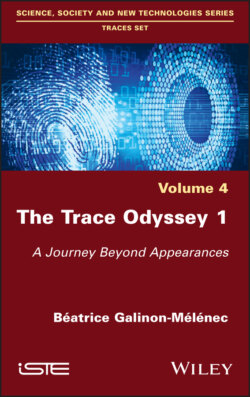Читать книгу The Trace Odyssey 1 - Beatrice Galinon-Melenec - Страница 8
I.2. The call of digital society for new forms of traceability
ОглавлениеThe pressing obligation to exist on the Web leads to the temptation to circulate pieces of information that are constantly renewed and multiplied, although quickly or poorly verified, in response to flattering misrepresentations (Goffman 1973) that invite the adoption of digital devices providing false appearances (Debord 1967). The machine records important digital inscriptions and circulates them according to a given algorithm logic.
Initially, an algorithm is a logical sequence of actions. For example, a kitchen recipe is an algorithm that provides instructions to someone wishing to cook, by specifying the execution of tasks, and their contents, in a precise order. Based on such “recipes”, the first programmers designed computer algorithms whereby a digital algorithm provided pieces of information in the form of machine language. The algorithm ensures that these pieces of information followed a precise path resulting from binary answers (“yes” or “no”) to human-designed questions. The process enables the algorithm to produce a rationally constructed result.
DEFINITION.– A digital algorithm is a numerical written form, of human reasoning (and thus a cognitive trace2) that is then integrated into a machine.
We shall see further on3 that these algorithms, by working from numerical inscriptions – combining 0s and 1s – can cut the numerical sequences for other assemblies and other computations4 than those initially planned. The more numerous these manipulations, the more difficult it is to go back to the original inscriptions. This raises serious questions about the nature and validity of the results obtained from this process.
This is why the possibility of performing the path backwards, the so-called “tracing of computer processes” is of considerable importance in order to grasp the “relevance” (Sperber et al. 1986) of the data resulting from these successive transformations. Computer traceability is the possibility of identifying all the selection actions that lead to the retention of certain data and the exclusion of others. In some cases, this system can lead to the programmer, who designed the algorithm, being called into question5.
Digital data processing produces what contemporaries call digital traces. They constitute a major challenge for all users of digital technology given that soon, the entire population of societies will have access to it6. For them, the reign of the “Internet of Everything” is now well established. Individuals and machines are permanently connected to each other, creating a continuous flow of meshed connections of interactions between networks that produce “trace-domino effects”7.
